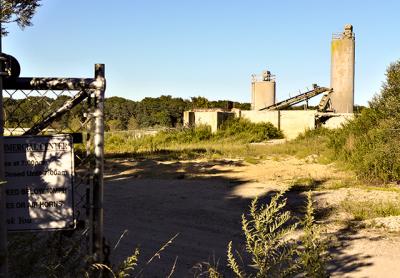Danger in Private Wells?

Citing recently reported results of tests on water from Suffolk County Water Authority wells throughout East Hampton Town, which showed the presence of chromium-6, a resident of Wainscott, where a well had the highest reading, is urging town officials to have tests done on drinking water from private wells.
Chromium-6 is a toxic element labeled a carcinogen by the federal Department of Health and Human Services. Of particular concern, the Wainscott resident, Simon Kinsella, wrote in a recent letter to Michael Sendlenski, the town attorney, is that the Environmental Protection Agency cites cement plants as a source of chromium-6, and that Suffolk Cement operates a plant at what is called the “pit,” a former sand-mining site comprising 38 acres north of Montauk Highway in the hamlet.
The letter was copied to the town board, the New York State Department of Environmental Conservation, the chairmen of the New York Senate’s health and environmental conservation committee, and the E.P.A., along with the Wainscott Citizens Advisory Committee, of which Mr. Kinsella is a member.
It also was sent to Christopher Gobler of Stony Brook University’s School of Marine and Atmospheric Sciences, who has been monitoring water quality in the area for the East Hampton Town Trustees. Mr. Kinsella suggested that Dr. Gobler be engaged “to thoroughly test the drinking water within Wainscott.”
The levels of chromium-6 in the samples from water authority wells in East Hampton Town ranged from .033 parts per billion at Montauk to a high of .54 parts per billion at Wainscott. The results were distributed in a recent report from the Washington, D.C.-based Environmental Working Group on nationwide testing for chromium-6.
The federal government has not set a standard for acceptable levels of chromium-6, which is also called hexavalent chromium and can occur naturally. However, the E.P.A. has set a standard of 100 parts per billion for total chromium, which includes all forms of chromium.
In California, where state regulators set a 10 parts per billion legal limit for chromium-6 in drinking water, scientists concluded that the ingestion of even minute amounts of the element is cancer causing. They set a safe level for lifetime exposure at .02 parts per billion.
A legal battle over chromium-6 pollution in drinking water in Hinckley, Calif., which ended in a $333 million settlement against Pacific Gas and Electric, was chronicled in the film “Erin Brockovich.”
Mr. Kinsella provided a report by Pace Analytical Services of Melville showing the results, he said, of laboratory tests on water samples from nine pools of standing water at the Suffolk Cement property. The levels in two of those nine samples were exponentially higher than those found in water authority wells. The property, which also contains Wainscott Sand and Gravel, is within a county-designated groundwater management zone pinpointed for protection, as well as the Georgica Pond watershed.
Groundwater in the hamlet is also among the topics on the agenda of the Wainscott Citizens Advisory Committee meeting on Saturday at the Wainscott Chapel at 9 a.m.
“It’s very concerning,” Councilwoman Kathee Burke-Gonzalez said this week of chromium-6. She noted that Mr. Kinsella’s letter had been forwarded to the Suffolk County Department of Health Services in addition to D.E.C. officials and the water authority.
“While we’re not looking to alarm anyone,” Ms. Burke-Gonzalez said at a town board meeting on Tuesday, “we believe engaging these agencies is a prudent thing to do.”
